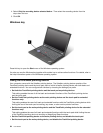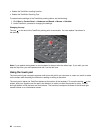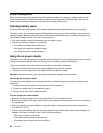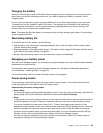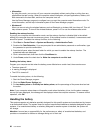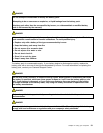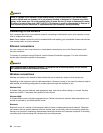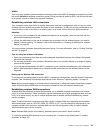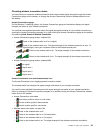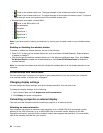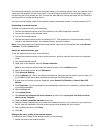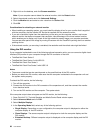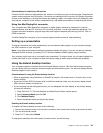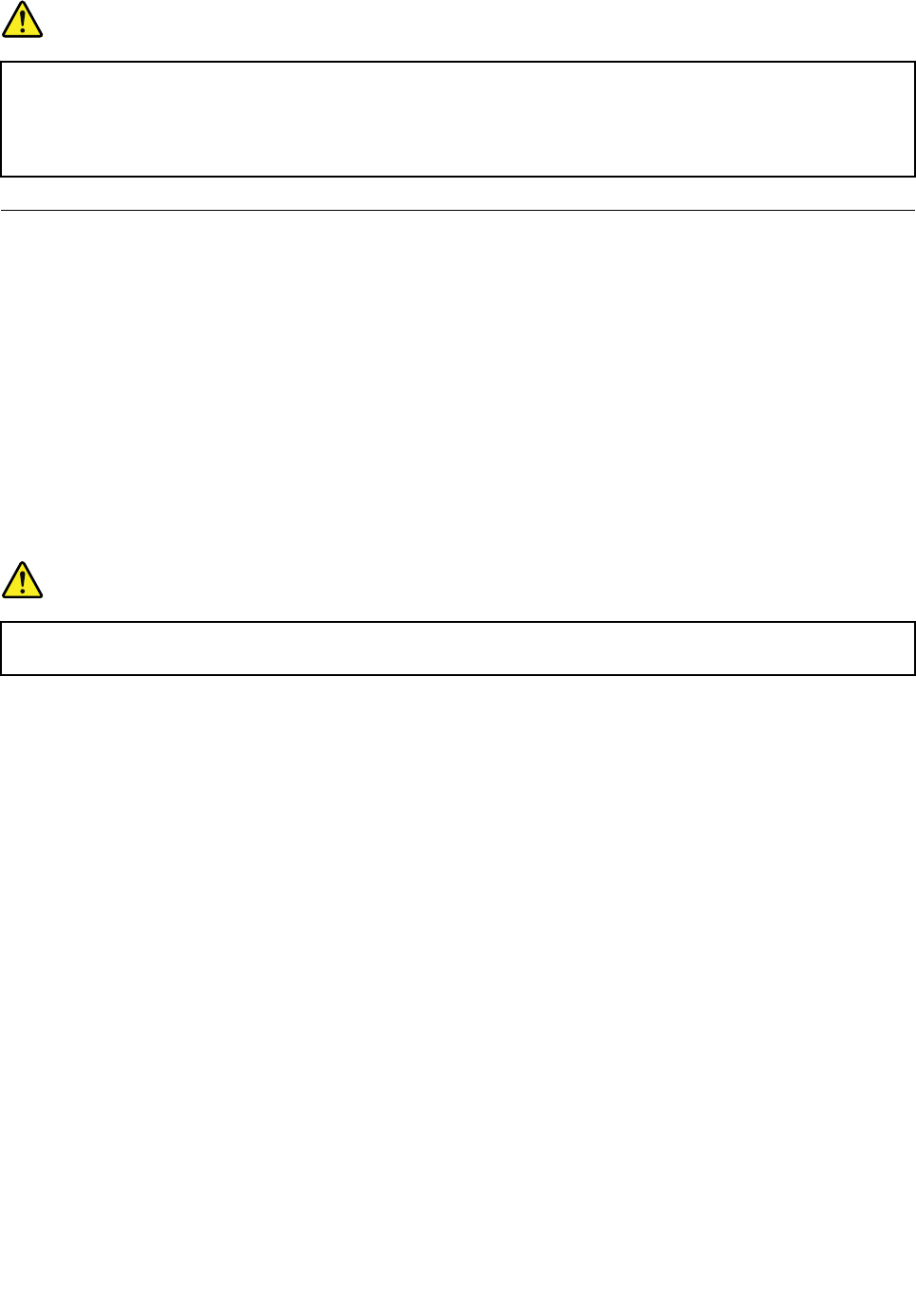
DANGER
There is a danger of an explosion if the backup battery is incorrectly placed. The lithium battery
contains lithium and can explode if it is not properly handled, or disposed of. Replace only with a
battery of the same type. To avoid possible injury or death, Do not: (1) throw or immerse into water,
(2) allow it to heat to more than 100°C (212°F), or (3) attempt to repair or disassemble it. Dispose of
it as required by local ordinances or regulations and your company's safety standards.
Connecting to the network
Your computer has one or more network cards for connecting to the Internet and to your company's wired
LAN or wireless LAN network.
Note: Some models come with a built-in wireless WAN card enabling you to establish wireless connections
over remote public or private networks.
Ethernet connections
You can connect to your local network or a broadband connection by use of the Ethernet feature built
into your computer.
To connect to a network through Ethernet, use the Access Connections program. For more information,
see the help information system of the program.
DANGER
Your computer has an Ethernet connector. To avoid the risk of electrical shock, do not connect
the telephone cable to the Ethernet connector.
Wireless connections
Wireless connection is the transfer of data without the use of cables by means of radio waves only.
Depending on the frequency used for data transmission, the area covered, or the type of the device used for
data transfer, the following categories of wireless networks might be available to you.
Wireless LAN
A wireless LAN covers a relatively small geographic area, such as an ofce building or a house. Devices
based on the 802.11 standards can connect to this network.
Wireless WAN
A wireless WAN covers a broader geographic area. Cellular networks are used for data transmission, and
access is provided by a wireless service carrier.
Bluetooth
Bluetooth is one of a number of technologies used to create a wireless personal area network. Bluetooth
can connect devices a short distance from one another, and is commonly used for connecting peripheral
devices to a computer, transferring data between hand-held devices and a personal computer, or remotely
controlling and communicating with devices such as mobile phones.
32 User Guide



